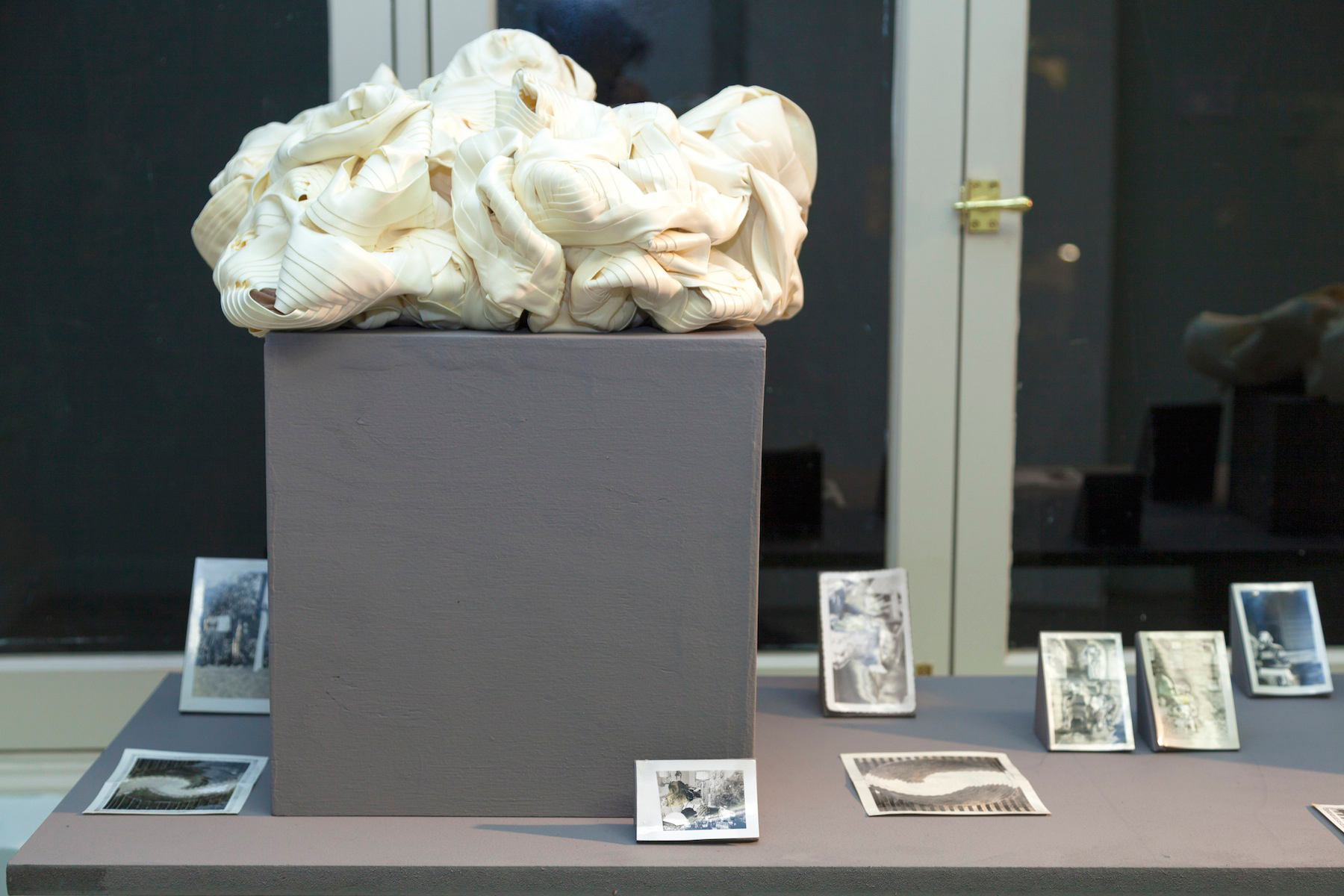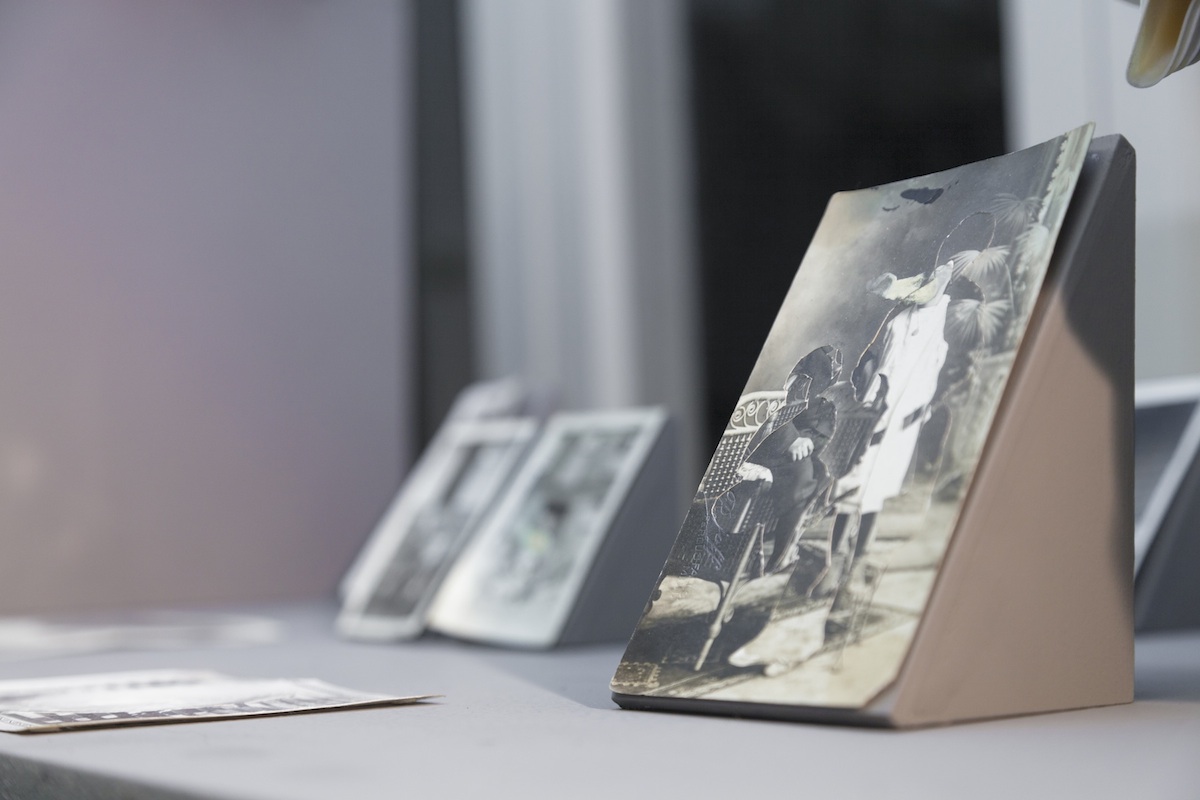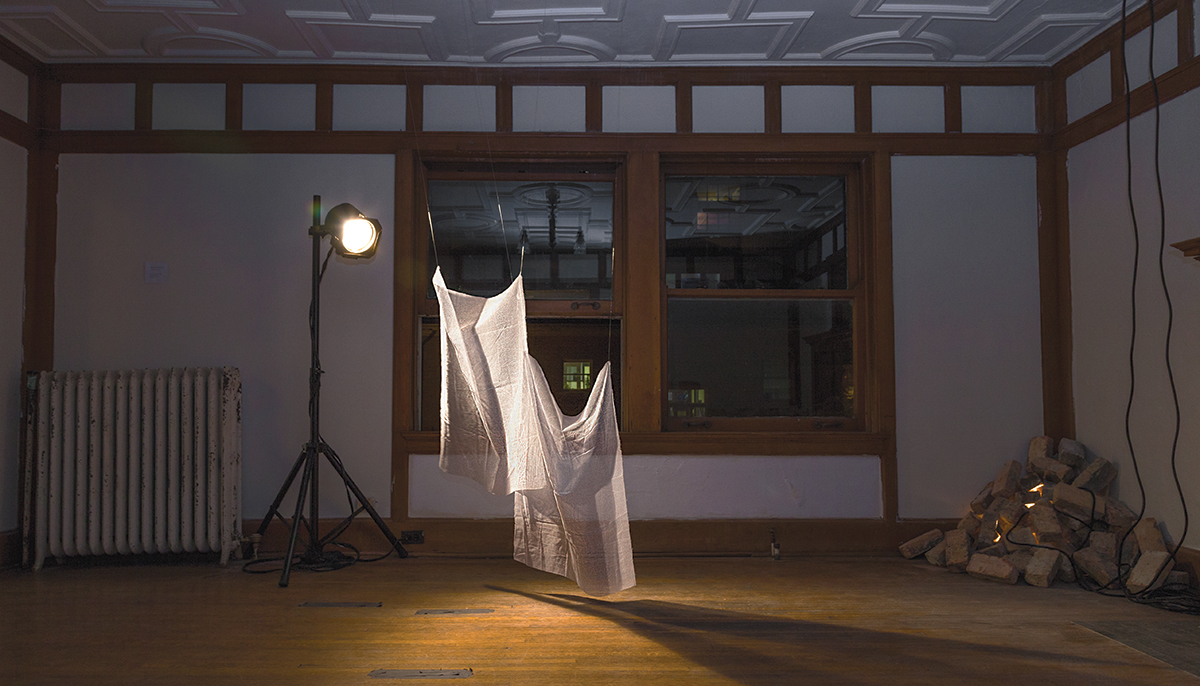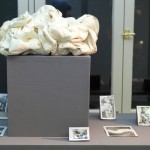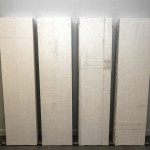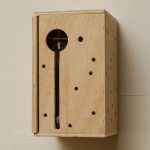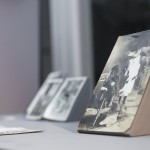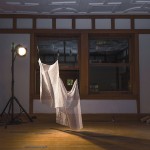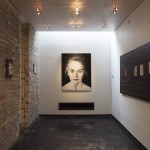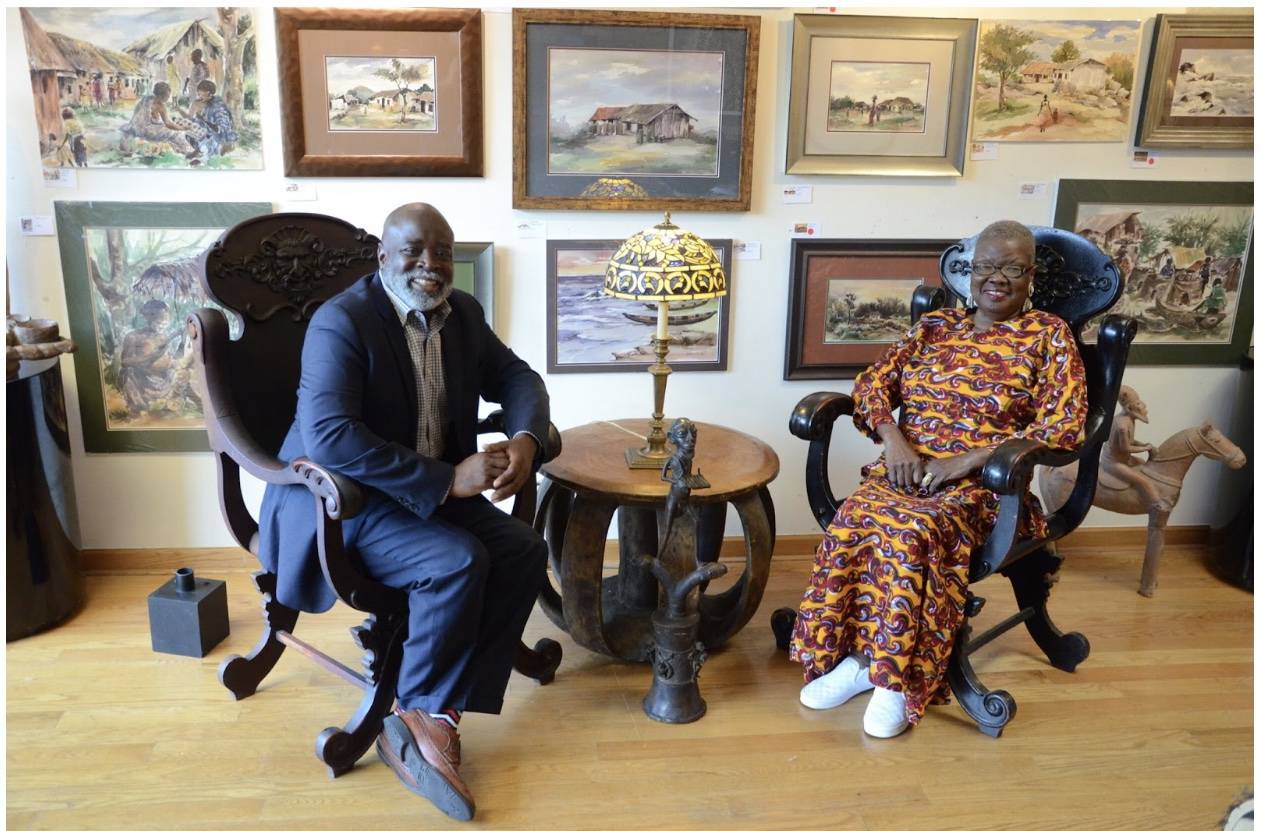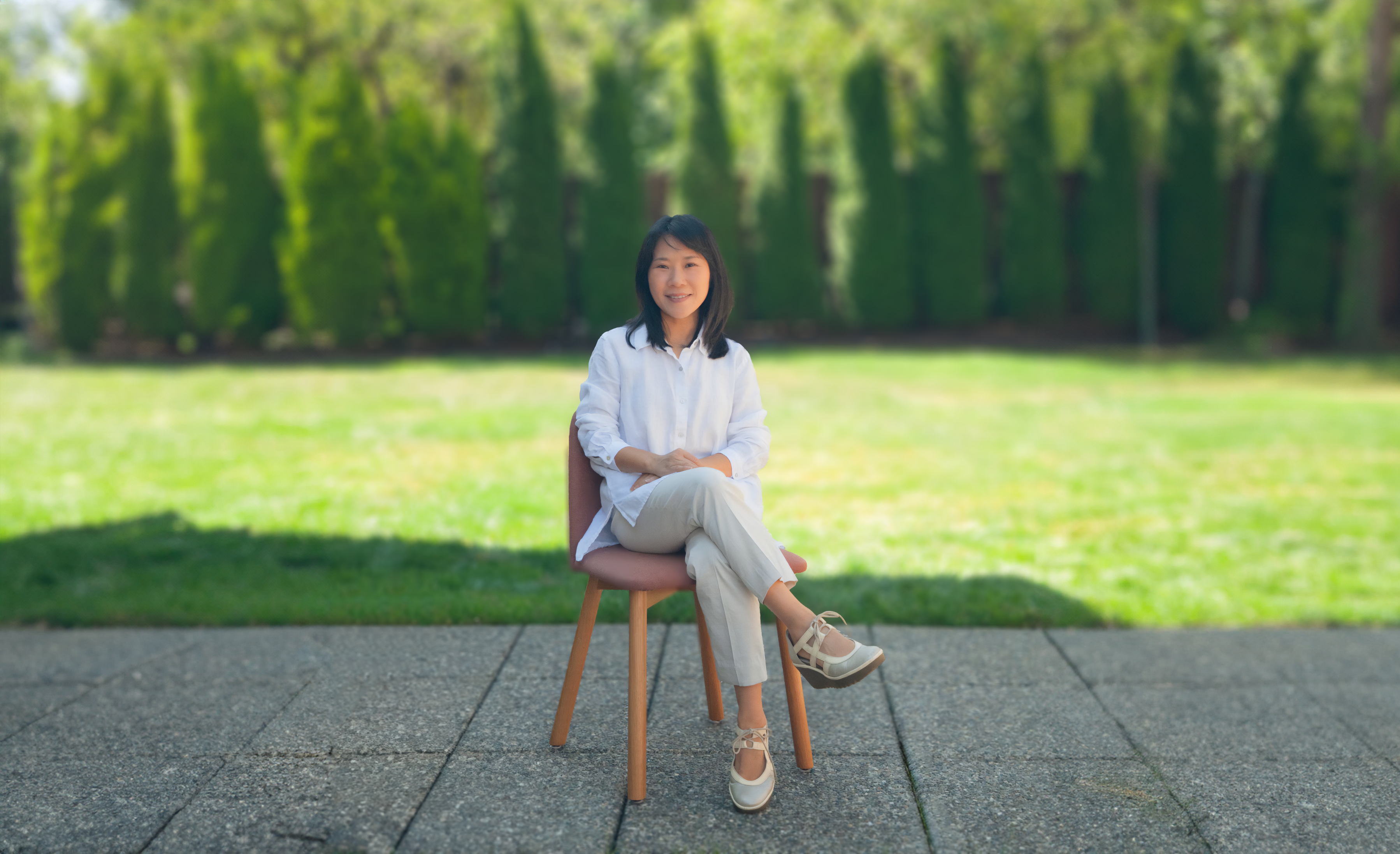When I was young, my sister and I climbed into the attic closet of our childhood home and scratched our names alongside those of the kids who had lived there before us. Though the collection of wall markings was the most discernible sign of who had come before, the ghosts of families past no doubt hovered in the walls, in the floorboards, in the wood of the tree house that sat out back.
This conversation between the ghosts and the markings lies at the heart of “Not Unlike Any Land,” a City of Chicago-sponsored group exhibition on display at the Gunder Mansion in Chicago’s Berger Park at 6205 North Sheridan Road. The mansion was designed in 1910 for pharmaceutical executive Samuel Gunder and later housed the Viatorian religious order. It has been uninhabited since its purchase by the Chicago Park District in 1981. Today, thanks to the curatorial vision of Bianca Bova, and the site-specific installations of five artists, the shadows of the home’s multiple pasts are rendered palpable.
The first room of the exhibition was once Mr. Gunder’s private study, a history contained by the heat of a corner radiator. In Robert Sebanc’s “54 Bricks” and “Common Bricks” (2013), installations occupying two corners of the room, this sense of interiority is turned inside out and back again. Found bricks — many of which bear their maker’s mark — protrude from the walls and huddle around a hidden light source, evoking the labor of home-making and the individual experiences embedded in the most common material.
A shadowed pathway (a privilege of my night-time viewing) connects the bricks to an equally present but far less concrete material -— the sharkstooth scrim fabric of Sevy Perez’s “Covers (K. 2)” (2015), which hang suspended in front of the room’s windows, echoing their dimensions and dual role as protector and portal to the outside world. When seen in daytime, “Covers(K. 2)” calls attention to light patterns — or the unchanging way that light falls in that particular room — as a sole element of permanence in both the home’s history and the work itself.
Everyone and everything seem to be in conversation: the bricks with the fabric, with the light, with the windows, with Klaus Pinter’s miniature ode to American teenagehood “Steps” (2015), which hangs solitary but not insubstantially on a neighboring wall.
The second and final room of the show — once Mr. Gunder’s solarium, now under a fresh layer of paint — extends this conversational interplay between what is seen and unseen in the space of the home.
In David Perales Albert’s “Studs” (2014), what we see is what usually lurks behind — the guts of a structure’s skeleton, here made visible by four identical wall studs whose plaster exteriors deny clarity but evoke refuge. Mimicking dimensions typical of a 1940s suburban home, Albert’s “Studs” — in the spirit of an artist like Rachel Whiteread — materializes the immaterial in an ode to the histories that hover in any space.
The plaster of Albert’s “Studs” is undone and reassembled on the opposite wall by Polly Yates, whose “Lines Around Bodies” (2015) lends a sense of movement to the otherwise still space. The piece features a table spread of found black and white family photographs punctuated by two masses of tangled medical bandages, as if the contents of Mr. Gunder’s desk had been laid out for quiet inspection. But Yates ensures the privacy of her chosen subjects, meticulously removing their faces and replacing them in a way that produces uninterrupted but uncanny photographic surfaces. The tangled bandages echo the circular lines of the hills and skies of her “Landscape Series” photographs (2013-2014), a number of which among the table’s collection.
On my way out, the curator pointed at two storage rooms down the hall. Though concealed, the content of these rooms seem to reverberate in the pieces that make up “Not Unlike Any Land,” new markings on the home’s geography. It also seems to reverberate in the friends and family who slowly flowed in and out of the spaces, not unlike the bodies of generations before them.
And therein lies the true accomplishment of “Not Unlike Any Land.” It is an exceedingly poignant meditation on the dynamic nature and great privilege of dwelling. It has given form to absence, but also foregrounded art making as home-making, as trace-leaving, as a kind of plaster cast.
The exhibition will run through the end of November, with viewing by appointment only. Appointments can be made by contacting [email protected].

